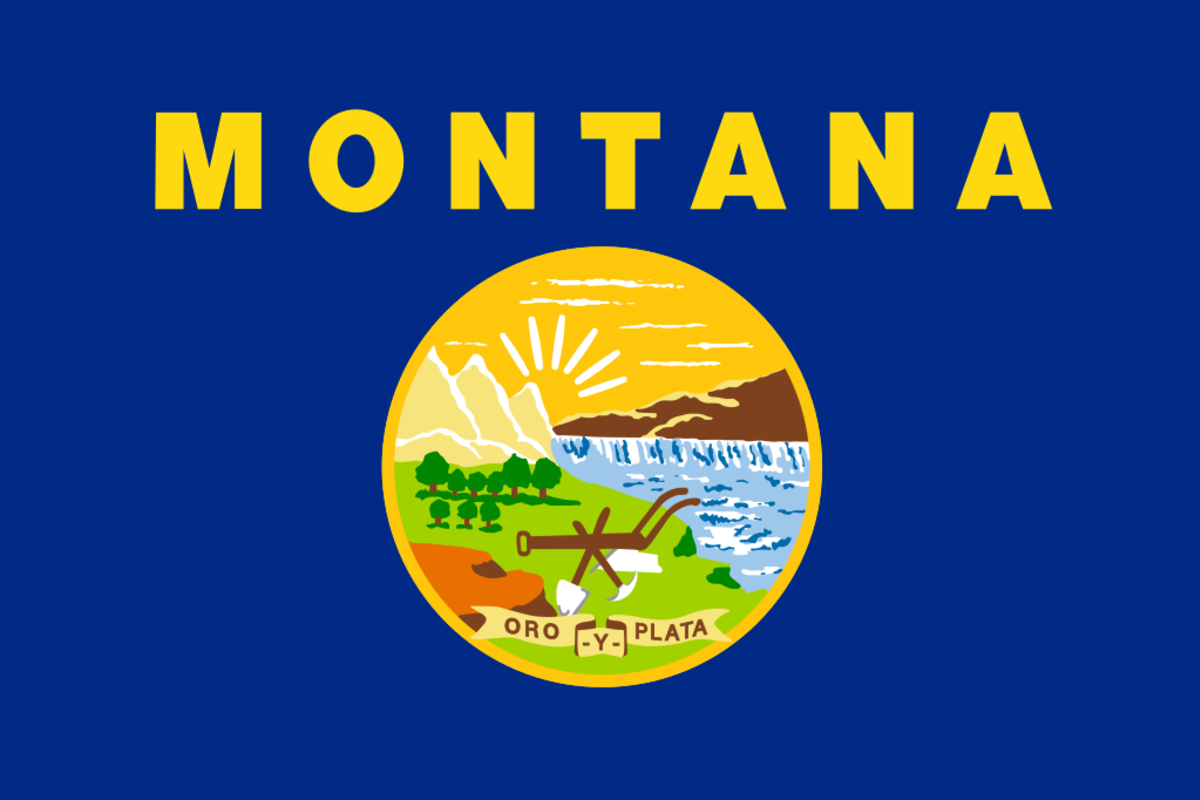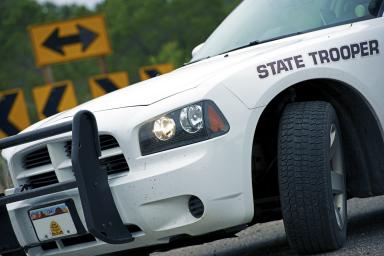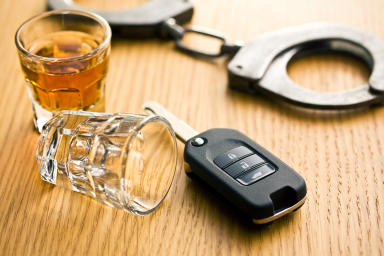Montana DUI Laws

Montana is a state where registered vehicles greatly outnumber the residential population. Almost three-quarters of its commuters drive alone to work, while a measly 0.41% use public transportation on their daily commute.
A possible reason for people’s preference to use a private vehicle is the state’s limited public transit options. One can also argue that a focus on roadway projects and existing parking mandates incentivize car use.
All these point to the state’s car dependency and may show why many people choose to drive despite not being fit to do so after consuming alcohol. This might be a factor in why 45% of traffic deaths on the state’s roads in 2020 involved impaired driving. Additionally, the state has a very high number of establishments serving alcoholic drinks, at 51.9 bars per 100,000 people. Incidentally, these numbers make Montana rank first in both categories compared to other states.
Its high impaired driving fatality rate can also be linked to having very few regulations to mitigate drunk driving accidents. The state does not have sobriety checkpoints, an all-offender interlock law, or automatic license revocation as a penalty.
Hence, in light of these facts, it is important to be knowledgeable about Montana DUI laws and various related resources. Learning about these in the sections below can give a victim a high chance of obtaining compensation after suffering damages from a drunk driving crash.
General DUI Laws in Montana
In Montana, driving under the influence — despite what it’s called — is a criminal offense that does not necessarily have to involve the act of driving. If a person is merely in actual physical control of a vehicle while drunk or high, they may also be charged with a DUI.
Having actual physical control of a vehicle means being in a position to direct its movement, whether its engine is on or off at the time of the arrest. Based on a previous courtroom judgment, simply sitting in the passenger compartment while in possession of a car’s keys also falls under this definition.
There are two ways a person may be deemed “under the influence,” according to state legislation:
Impairment: This applies to individuals who cannot physically drive a vehicle in a safe manner after consuming alcohol or drugs. Traffic officers typically gauge a person’s impairment through a field sobriety test. This may constitute asking them to stand on one leg, having them walk and turn, and checking for signs of horizontal gaze nystagmus.
Blood alcohol content/THC level: A person with a BAC reaching the maximum threshold may be convicted of a DUI. The maximum allowable BAC level is 0.08% for adult drivers, 0.02% for those under 21, and 0.04% for commercial vehicle operators. Additionally, if a driver’s THC concentration is found to be at least five nanograms per milliliter, they may have to face certain legal repercussions. A possible defense, however, can be in the form of a medical marijuana prescription if the person arrested does not show signs of impairment despite having high traces of THC in their system.
Aggravated DUI
An aggravated DUI, as one can infer based on its name, is a more serious form of a DUI offense. A typical DUI escalates to this level if one or more of the following situations are present:
The person has a BAC level of 0.16% or above;
The person is only allowed to operate a vehicle with an ignition interlock device based on a court or department order;
The person has a suspended, canceled, or revoked driver’s license from a prior DUI or aggravated DUI conviction;
The person turns down a breath test, and their license has already been suspended, canceled, or revoked after refusing to take a breath, blood, or urine test in a previous DUI arrest.
Exemption for Cyclists
Unlike in other states, bicycles are not considered vehicles in Montana. For this reason, riding a bike while intoxicated cannot be used as grounds for a DUI charge. However, a drunk cyclist still faces several risks, such as figuring in an accident, flouting traffic laws, and being convicted of the following offenses:
Public intoxication refers to being inebriated while in a public place. Though not a criminal offense in itself, it can still lead to detention to protect the violator’s well-being while in an impaired state of mind.
Negligent endangerment occurs when a person — a drunk bike rider in this case — can possibly cause serious injury or death to another individual. This violation’s punishment includes a maximum of $1,000 in fines, up to a year in county jail, or a combination of both.
Underage DUI Laws in Montana
According to U.S. Department of Transportation data analyzed by the Insurance Institute for Highway Safety, teens are more likely to be involved in a vehicular crash if they consume alcohol prior to getting behind the wheel. As a way to prevent this type of accident from happening, the federal government ordered the enactment of a zero-tolerance policy across the country. This law states that individuals under 21 years old should not drive or be in actual physical control of a vehicle if their BAC level is 0.02% or higher.
Since the establishment of the law, an average of 159 people per year have avoided fatal DUI accidents.
DUI-adjacent Laws in Montana
Unlawful Possession of Marijuana in a Vehicle
In Montana, the recreational use of up to one ounce of marijuana by individuals 21 and over is legal. However, it is prohibited in public settings. In line with this, being in possession of the drug while in a car on a highway is against the law, and an offender is subject to a maximum of $100 in fines. Nevertheless, this violation is not considered a criminal offense.
Unlawful Possession of an Open Alcoholic Beverage Container in a Vehicle
One does not need to have consumed alcohol while in control of a vehicle to face legal consequences. Just having an open alcoholic drink while in a vehicle on a highway violates state law and leads to up to $100 in fines. However, like the unlawful possession of marijuana, it is not categorized as a criminal offense and cannot be included in a driver’s record.
Boating Under the Influence
Boating while under the influence of alcohol or drugs is typically classified as a misdemeanor. Those found guilty of BUI can face up to six months in jail, fines ranging from $15 to $500, or both.
What Are the Penalties for a DUI in Montana?
Individuals who have broken the state’s DUI laws are subject to penalties based on their DUI conviction history, as shown in the table below. Having a second DUI offense within the last 10 years is taken into account when determining the severity of one’s punishment. Meanwhile, third and subsequent offenses — even if they are from over a decade ago — are always factored in.
As one can see, driver’s license suspension or revocation is on the table. If a violator wants to contest this sanction, they are given 30 days to request a hearing for an appeal after receiving a suspension or revocation notice from their arresting officer.
Moreover, a person’s driver’s license will receive 10 demerit points, their vehicles will be equipped with an ignition interlock device, and they may have to attend a treatment course, a 24/7 sobriety program, and a substance abuse class.
Penalties for Minors
In addition to fines and license suspension or revocation, an offender under 18 years old can face vehicle impoundment for up to 60 days.
Enhanced Penalties
A person may receive enhanced penalties if they are guilty of aggravated DUI or if they have a passenger under the age of 16 at the time of the arrest.
Having an enhanced-penalty DUI for the first time translates to spending two days up to a year in jail, paying a $1,000 fine, facing a six-month license suspension, and having an ignition interlock device installed in one’s vehicle.
Implied Consent Violation Penalties
All states in the U.S. have their own variation of the implied consent law. In Montana, a person is assumed to have given their consent to a breath, blood, or urine test if they are in control of or operating a vehicle.
If a driver is suspected of committing a DUI and refuses a chemical test to determine their BAC level, they can have their license suspended for six months. Those with a commercial driver’s license, meanwhile, will be punished through a one-year license suspension.
Montana’s Dram Shop Law
A dram shop (or dramshop) refers to any commercial establishment where alcohol is sold and allowed to be consumed. In Montana, just like in most states in the country, there are laws outlining the possible liability of a business if it serves alcohol to a patron who causes injury or property damage to someone else. An establishment may be deemed at fault if:
It serves alcohol to a person under 21 years old, and the server knows or should have known their age;
It serves alcohol to a person who is already clearly intoxicated;
Its server forces a person to consume alcohol or falsely claims that the drink being served is non-alcoholic.
Despite the law’s name, people and entities that are hosting a party or an event — even if they are only serving alcohol at a function and not selling it — may also be included in its scope. However, their liability is categorized as personal instead of commercial.
Dram Shop Liability Insurance
Violating the dram shop law opens the door to a civil lawsuit. This means if a plaintiff pursues legal action in line with this law and wins their case, the business, person, or entity involved is required to cover the damages. As such, it would be wise for those regularly serving alcohol to obtain insurance to avoid paying compensation out of pocket in similar instances. In Montana, two types of policies may be purchased:
Liquor liability insurance: This coverage, which can be an add-on to commercial liability insurance, shoulders the compensation an at-fault business is legally required to pay the plaintiff. It is required for establishments that serve alcohol.
Social host liability insurance: This option covers the compensation a party or event host should pay for the damages incurred by the plaintiff.
How Much Can Someone Sue For a Drunk Driving Injury in Montana?
Montana abides by the rules of the modified comparative negligence system. Since this framework governs personal injury lawsuits involving DUI accidents, a plaintiff must establish these four elements to show the defendant is at fault:
The defendant had a duty of care toward the plaintiff. In the context of DUI accident cases, this means operating a vehicle with care and without diminished abilities to avoid injuring someone else.
The defendant breached this duty of care. This could mean driving despite being impaired after consuming alcohol or drugs.
The defendant’s breach of this duty of care led to the plaintiff’s injury.
The plaintiff’s injury caused them to suffer damages.
An injured victim is entitled to receive compensation from the defendant if they are successful in proving these elements in a civil lawsuit, unlike in a criminal DUI case where the plaintiff is the state and no damages are awarded. However, if a victim is partially responsible for the injuries they have incurred, they can only obtain a percentage of the damages in a civil personal injury case. To illustrate, here’s a concrete example:
A person operating a vehicle becomes injured after being hit by a drunk driver. They were able to prove the drunk driver’s negligence after filing a civil case worth $100,000 in damages. However, it has been discovered during the trial that the injured victim ran the red light when the crash happened, and the judge deemed their fault to be 35%. Consequently, the same percentage — 35% — was subtracted from their award. This means they were only able to take home $65,000 after the trial’s conclusion.
It should be noted that if a person’s degree of fault is 51% or above, they are barred from recovering any amount of damages, whether compensatory or punitive.
Types of Damages
Compensatory damages are either economic or non-economic in nature:
Economic damages pertain to monetary losses such as medical bills, lost wages, and vehicle repair costs.
Non-economic damages are non-financial and are, therefore, harder to quantify in dollars. These include pain and suffering, the loss of enjoyment of life, and mental anguish.
Meanwhile, punitive damages are a form of punishment that may be imposed on a defendant if an act of malice on their part resulted in someone’s injury. In personal injury cases, the presence of malice can be hard to prove, which is why punitive damages are not typically included in a judge’s decision. However, driving under the influence — if done intentionally — usually has an element of malice since one should be generally knowledgeable of the risks it poses to other people.
Caps on Damages
In Montana, personal injury cases related to DUIs typically have no economic and non-economic damage caps. However, punitive damages cannot go beyond 3% of a defendant’s net worth or $10 million, whichever value is lower.
Meanwhile, the non-economic and punitive damages in dram shop cases can only be up to $250,000. Additionally, in personal injury lawsuits against government entities, each claim’s value can only be $750,000 at the most, while each occurrence can be worth up to $1.5 million.
The Statute of Limitations in Montana
Three years is the typical statute of limitations for DUI injury cases in the state. The same timeframe applies in wrongful death suits, with the clock beginning on the date of the victim’s passing. A shorter deadline — two years — is given to cases that only involve property damage.
Pursuing legal action after the statute of limitations usually leads to a case’s automatic dismissal, which means a victim no longer has the right to claim damages. Certain situations — like if the victim is a minor or the defendant is a government employee — can also make a case’s statute of limitations longer or shorter. Since different factors affect how long a victim can sue the at-fault party, it would be prudent to hire a personal injury lawyer with proven expertise in DUI lawsuits.
Resources for Folks Injured by an Impaired Driver in Montana
Montana Assistance Programs
The state’s Department of Public Health and Human Services oversees various programs to help locals in need of medical, cash, or food assistance. Low-income individuals with injuries caused by a drunk driving accident can check online if they qualify for Medicaid, the Temporary Assistance for Needy Families scheme, or the Supplemental Nutrition Assistance Program. For further inquiries, one may also call 1-888-706-1535.
Montana Legal Services Association
This nonprofit advocates for the civil legal rights of low-income individuals in the state. With a vast network of public- and private-sector groups and agencies, it can assist drunk driving victims through legal advice and representation. To know if you are eligible to receive the association’s services, you may apply online or call 1-800-666-6899.
Mothers Against Drunk Driving Montana
MADD, a nonprofit with a nationwide presence, is composed of staff and volunteers with the shared experience of having their lives altered because of drunk driving, either as a victim or as a victim’s loved one. It helps people obtain financial assistance from the government and guides them as they face various legal ordeals. The organization also provides emotional support to victims and advocates for the passing of laws to mitigate drunk driving incidents throughout the country. In Montana, MADD is pushing for stricter measures surrounding the ignition interlock law. One may reach the group by calling 1-877-623-3435.
Expertise.com StaffAuthor
Step into the world of Expertise.com, your go-to hub for credible insights. We don't take accuracy lightly around here. Our squad of expert reviewers, each a maestro in their field, has given the green light to every single article you'll find. From rigorous fact-checking to meticulous evaluations of service providers, we've got it all covered. So feel free to dive in and explore. The information you'll uncover has been stamped with the seal of approval by our top-notch experts.




